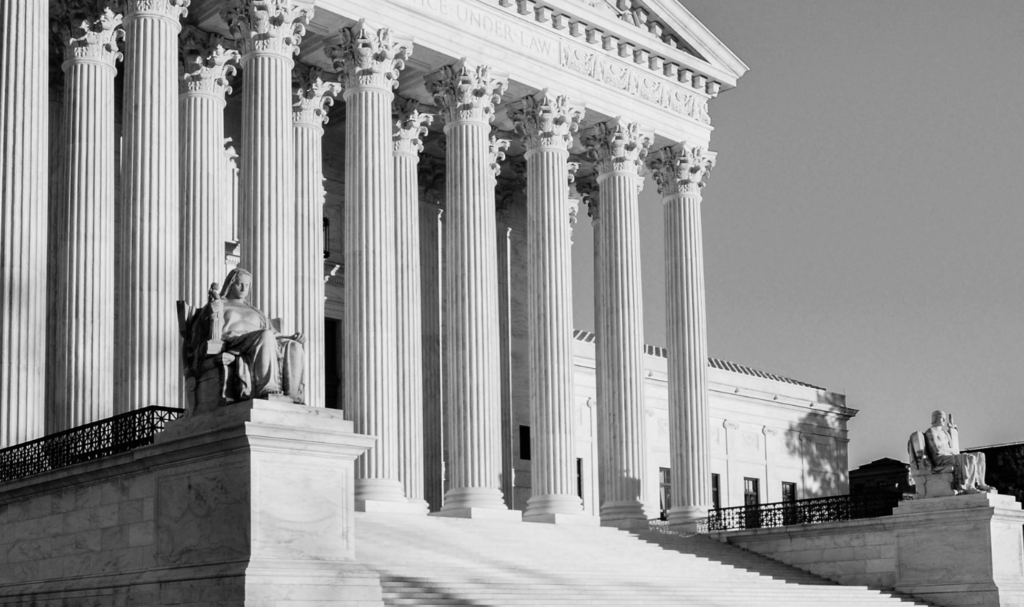Should members of a majority group, say, white, heterosexual men, bear a heavier evidentiary burden to prove a claim of employment discrimination than members of a minority group? Until recently, the U.S. Circuit Courts of Appeals were split on handling reverse discrimination claims brought under Title VII of the Civil Rights Act of 1964 (Title VII), which bars discrimination in employment on the basis of race, color, sex, religion and national origin. Reverse discrimination refers to bias against members of a majority group (e.g., race discrimination alleged by white plaintiffs or sex discrimination by a man).
In addition to the prima facie showing required of minority plaintiffs, the Sixth, Seventh, Eighth, Tenth and D.C. Circuit Courts of Appeals imposed on majority group plaintiffs the additional burden of presenting evidence of background circumstances that support the suspicion that the defendant is the unusual employer that discriminates against the majority. In Ames v. Dep’t of Ohio Youth Services, 145 S.Ct. 1540 (2025), the U.S. Supreme Court held that burden is inconsistent with Title VII’s text and the Court’s precedent.
Ames may be particularly welcome to critics of diversity, equity and inclusion (DEI) initiatives. After the death of George Floyd in 2020, a wave of DEI initiatives swept through the federal government and the private sector. Backlash followed. Over the past several years, plaintiffs, including organizations that also filed amicus briefs in Ames, have waged war on DEI in PR campaigns as well as before courts and administrative agencies nationwide resulting in numerous entities curtailing DEI initiatives, settlements and substantial jury awards.
Ames also could play a role in mounting DEI challenges. How much remains to be seen.
The Rationale of the Burden on Majority Plaintiffs
Courts typically analyze Title VII disparate treatment claims relying on circumstantial evidence by using the ubiquitous McDonnell-Douglas burden-shifting scheme. See McDonnell Douglas v. Green, 411 U.S. 792 (1973).
This scheme requires plaintiffs to set forth a prima facie case, which commonly encompasses proof that the plaintiff is a member of a historically marginalized group—e.g., a woman or minority—along with other relevant facts, e.g., being denied a position for which the plaintiff applied and was qualified.
Establishing a prima facie case raises the inference that the defendant acted with a discriminatory motive. The Supreme Court determined the inference is permissible because it presumed these acts, unless otherwise explained, are more likely than not based on unlawful considerations such as the plaintiff’s race or sex.
Courts that required background circumstances determined that the presumption the Court was willing to make is only permissible because of the country’s pervasive history of discrimination against traditionally marginalized groups. Because there is no widespread history of discrimination targeting majority group plaintiffs, they may take advantage of the McDonnell-Douglas presumption only by presenting evidence showing the defendant is the rare type that discriminates against the majority. In short, a showing of background circumstances in cases of reverse discrimination takes the place of membership in a marginalized group in other cases.
Striking the Burden
In Ames, which arose in the Sixth Circuit, a heterosexual plaintiff alleged discrimination after being rejected for positions that ultimately went to homosexual individuals. The Supreme Court has held that Title VII’s prohibition of sex discrimination encompasses sexual orientation discrimination as well. See Bostock v. Clayton County, Ga., 140 S.Ct. 1731 (2020). Because heterosexuals are a majority group and the plaintiff alleged discrimination on that basis, she was subject to the background circumstances rule.
In the Sixth Circuit, plaintiffs typically satisfied that rule with evidence demonstrating a pattern of discrimination against the relevant majority group or evidence that a member of the minority group was the decisionmaker. Because Ames made neither showing, the court affirmed summary judgment for the employer.
The Supreme Court reversed, holding the background circumstances rule was inconsistent with Title VII’s text and the Court’s precedent. The statute’s text draws no distinctions between majority and minority groups. Rather, it prohibits discrimination against any individual on the basis of that individual’s protected characteristic. As for precedent, the Court has held that Title VII prohibits discrimination against members of all races using the same standards. The Court also has admonished that the McDonnell Douglas framework should not be applied in a rigid, mechanized manner. The background circumstances rule flouts that guidance by requiring majority group plaintiffs (and only them) to produce specific types of evidence in every case to prove an employer acted with a discriminatory motive.
DEI Backlash: Lurking in the Background
Justice Clarence Thomas, in a concurring opinion, would also have jettisoned the background circumstances rule because it assumes that only unusual employers discriminate against individuals deemed to be members of a majority group, a proposition he calls “nonsensical” considering the current “obsession” with DEI.
Several amici in Ames also echo this position. They include organizations that have filed or threatened to file lawsuits and administrative complaints challenging DEI initiatives in courts and administrative agencies across the country. Two organizations, America First Legal and American Alliance for Equal Rights, have been particularly litigious, challenging DEI policies of dozens of organizations, including behemoths like IBM, Starbucks, Disney, Apple, CBS Broadcasting, Inc., Southwest Airlines, Nike, and scores more.
States and the federal government also have joined the battle. Earlier this year, the Trump administration issued a series of executive orders eliminating diversity initiatives across the federal government and among federal contractors. Taking the fight to the private sector, the administration also has directed federal agencies to identify private businesses that could be investigated for unlawful DEI practices.
Despite the backlash, merely labeling a program as DEI does not mean it violates antidiscrimination laws. In the first place, DEI has no uniform meaning. Critics describe it as giving preferential treatment to marginalized groups over white people or others deemed to be members of the majority. Under that sweeping definition, DEI initiatives would routinely violate Title VII unless subject to an exception. Conversely, proponents say DEI encompasses measures antidiscrimination laws do not prohibit. They include initiatives to prevent unlawful discrimination, ensure fair treatment and foster a welcoming and inclusive workplace for all employees as well as to eliminate barriers to opportunity for traditionally marginalized groups.
While a uniform definition for DEI remains elusive, employers have run afoul of antidiscrimination laws when a diversity policy includes quotas, a specific plan to achieve diversity or a preference for certain groups over others on the basis of protected characteristics.
For example, the U.S. Court of Appeals for the Fourth Circuit recently affirmed a jury verdict awarding a substantial sum to a white male plaintiff who was fired and replaced by a woman amid a DEI initiative intended to create “a different racial and gender makeup.” See Duvall v. Novant Health, Inc., 95 F.4th. 778, 79 (4th Cir. 2024).
In a similar vein, a federal district court denied an employer’s motion to dismiss when a white male plaintiff alleged his employer terminated him because of its affirmative action plan, which among other things, offered executive employees financial incentives if they increased the proportion of women and minorities in the workplace. See Dill v. Int’l Business Machines Corp., 2025 WL 913744 (W.D. Mich. 2025).
Regarding training, plaintiffs have survived dispositive motions in hostile work environment cases involving mandatory diversity trainings that, for instance, were separated by race and ascribed negative, racist traits to all white people. See Johnson v. Oregon, 2024 WL 5038803, *1, * 4 (D. Ore. 2024); Diemert v. City of Seattle, 689 F. Supp. 3d 956, 960 (W.D. Wash. 2023).
The Ames Effect
It is too soon to tell what role Ames may play in litigation challenging DEI initiatives. It may be minimal. For instance, fewer than half the federal circuit courts adopted the background circumstances rule, so Ames only affects claims arising in those jurisdictions. That said, lower courts situated in federal circuits that never expressly rejected the rule also have applied it. After Ames, they may no longer do so.
Perhaps more significantly, if DEI takes on the meaning some opponents give it—programs that limit or provide opportunities based on prohibited criteria—then those programs would likely violate Title VII regardless of whether the jurisdiction applies the background circumstances rule. For instance, in Duvall, the Fourth Circuit, which never adopted the rule, affirmed a verdict for a plaintiff challenging this type of initiative.
On the other hand, many DEI initiatives, at least as understood by proponents, do not generally violate antidiscrimination laws. Yet, because Ames makes alleged reverse discrimination cases easier for plaintiffs to litigate, employers facing claims may opt to curtail or cancel DEI initiatives rather than risk prolonged, costly litigation even for claims that might ultimately fail on the merits.
Accordingly, Ames could be yet another factor employers consider when determining how to respond to DEI backlash that shows no sign of slowing down.











Comments 1
Professor Green’s cogent analysis of Ames shows us what is to follow. It was foreshaddowed many years ago when Chief Justice Roberts declared (I think in the Louisville and Seattle school desegregation cases) that the way to end discrimination is to not discriminate, a premise that defied history of civil rights struggles in this country. Now that discrimination against minorities has “ended” according to the Court, it is time for the majority to use the civil rights laws and to make sure that minorities no longer get the benefit of the once civil rights guarantees. Otherwise stated, keep them in their place. As Professor Green demonstrates, Ames is only the beginning. I wait with trepedation as to what the Court will do with majority class action discrimination cases that are bound to arrive at its doorstep.